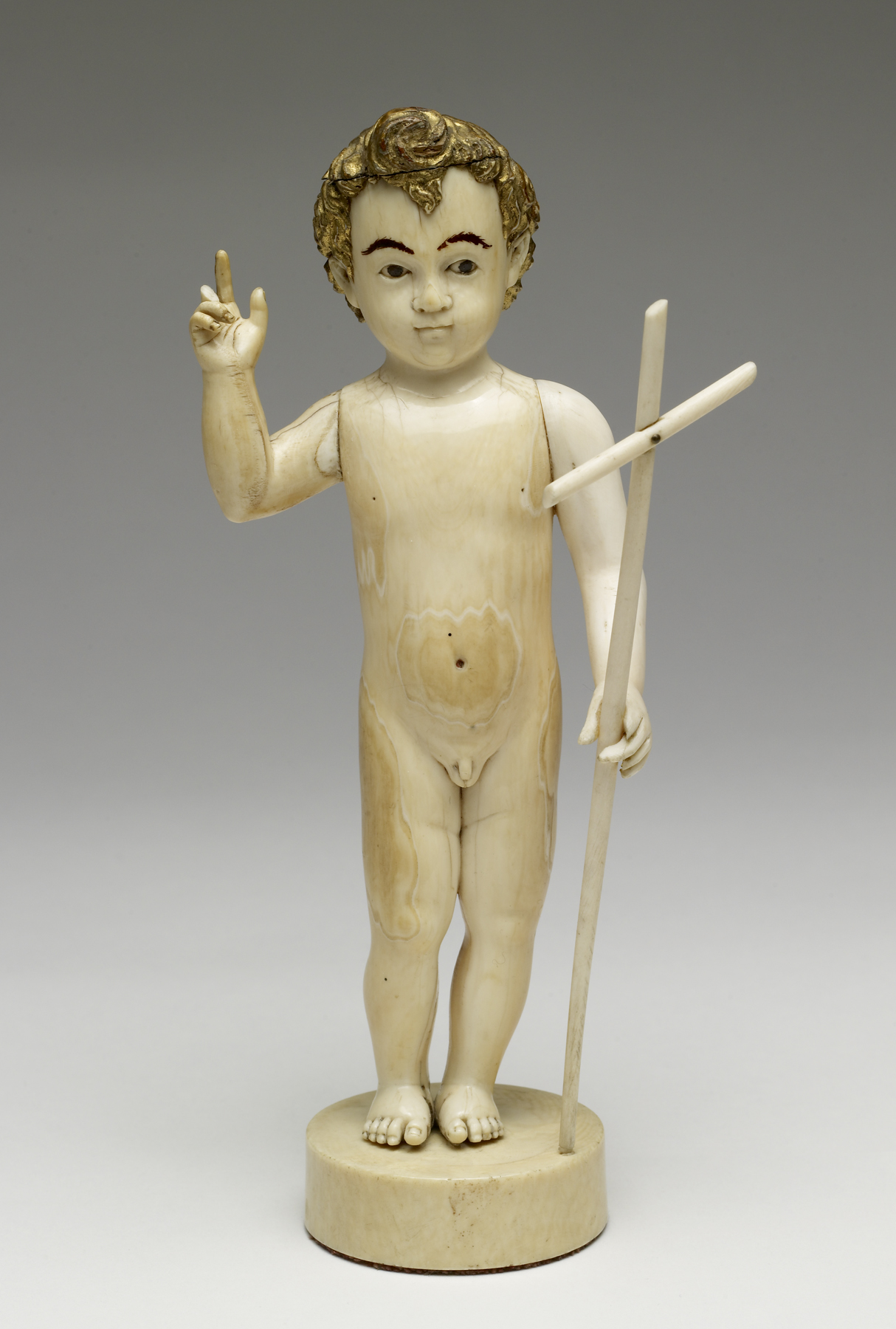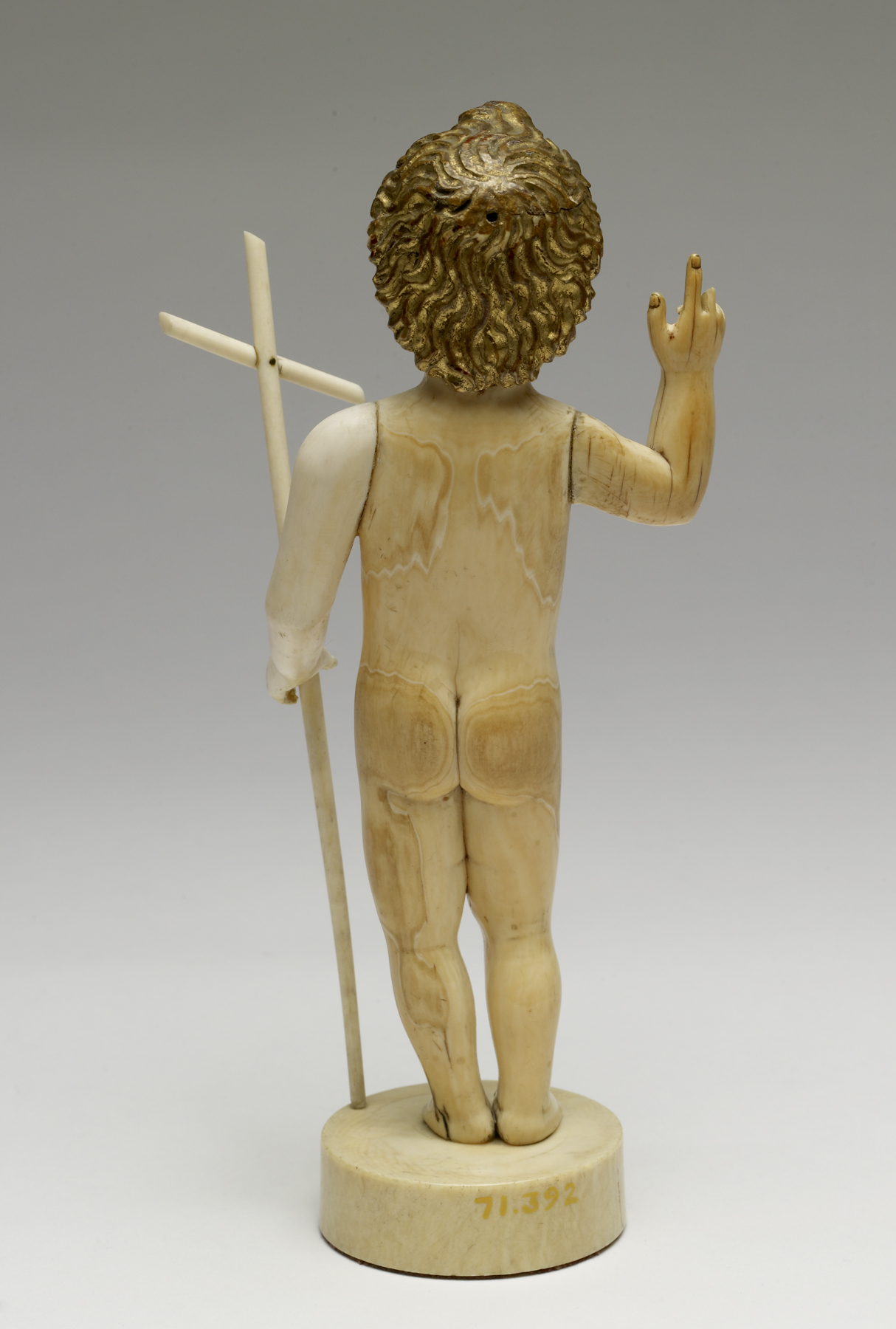Infant Christ as Saviour
(Baroque Europe )
Small standing figures of the Infant Christ carved in ivory were among the most popular subjects commissioned in the Philippines, then a Spanish colony, by Spanish merchants. These merchants, as well as priests, likely brought similar figures in painted wood from Spain, which became the models provided to local carvers, some of whom may have been ethnic Chinese; related figures of the Infant Christ in the Walters have distinctly Asian eyes. Devotional images of the Christ Child and the Virgin were traded along a route extending from the Philippines to Spanish colonies in Mexico and then on to Europe.
The standing nude Infant Christ raises his right hand in benediction and holds a cruciform staff in his left hand. The forms are smoothly rounded and generally lack detail. The Child's eyes and eyebrows are painted, and his hair is gilded. The crucifix is carved separately, as are his arms and the top of his head. He is missing the middle finger from his right hand and the forefinger from his left.
The Infant Christ was a favorite devotional image in Spain throughout the 17th and 18th centuries. Appealing to sentimental piety, these images, often carved in ivory (cf. 71.413, 71.414) were frequently found in convents. Small ivory images of the infant Christ were among the favored subjects commissioned by Spanish traders in the Philippines (a Spanish colony since 1565) from local carvers, most of whom (at least initially) were Chinese, members of a long-established merchant community. The primary model for this type is the painted wood sculpture of Martínez Montañés, for exemplified by a very similar figure of the Infant Christ as Saviour (1605-6) now in a church in Seville, the main Spainish port for trade with it world-wide network of colonies. In addition, the smooth, generalized surfaces, placid facial expressions, and cylindrical bases are all qualities that hint at the Chinese origins of the stylistic sensibilities.
The number "58" has been written in pencil on the top of the base; a printed tag under the base reads: ST. JOHN BAPTIST / XVII THE CENTURY / GRUEL COLLECTION.
There are two images of the sleeping infant Christ from the Philippines, carved in ivory in the collection (71.405, 71.406).
Inscription
Provenance
Provenance (from the French provenir, 'to come from/forth') is the chronology of the ownership, custody, or location of a historical object. Learn more about provenance at the Walters.
Léon Gruel, Paris; purchased by William T. or Henry Walters, Baltimore; by bequest to Walters Art Museum, 1931.
Exhibitions
| 2015 | Gold of the Ancient Americas. The Walters Art Museum, Baltimore. |
Conservation
| Date | Description | Narrative |
|---|---|---|
| Examination | Examined. | |
| Examination | Examined in preparation for exhibition. | |
| 1/11/1962 | Treatment | cleaned |
Geographies
Philippines (Place of Origin)
Measurements
H: 7 1/2 × W: 3 3/4 × D: 2 15/16 × Diam of base: 2 in. (19 × 9.5 × 7.5 × 5.1 cm)
Credit Line
Acquired by William T. or Henry Walters
Location in Museum
Accession Number
In libraries, galleries, museums, and archives, an accession number is a unique identifier assigned to each object in the collection.
In libraries, galleries, museums, and archives, an accession number is a unique identifier assigned to each object in the collection.
71.392






